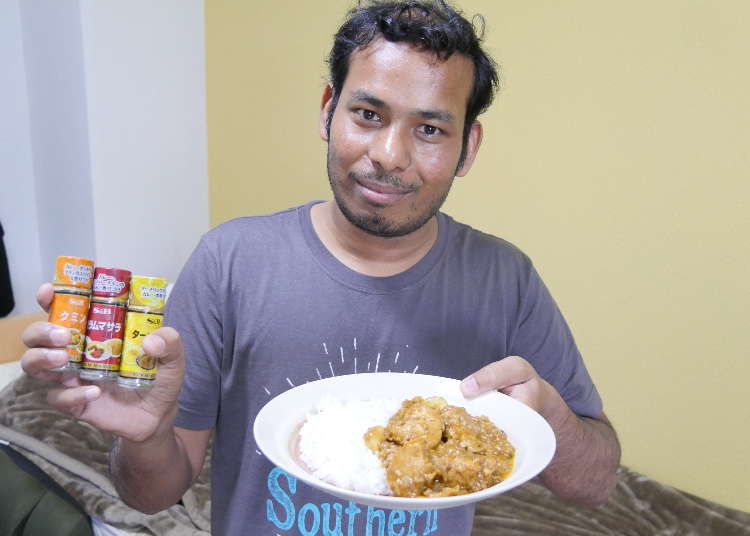
Many visitors to Japan are surprised by the variety and quality of products found in 100-yen shops. This time, we had an outrageous project: is it possible to make full-fledged Indian curry using spices sold at a 100-yen shop?!
Indian curry, with its complex taste and mixture of spices, is a little difficult for many Japanese to make. But when we challenge our chef only use spices sold at a 100 yen shop to make delicious Indian curry, we wondered too: can he pull it off?
Why try to make “100 Yen Spice Indian Curry”?

Anant, who was born and raised in India, is up to the challenge. I usually make curry myself and often eat Indian curry at restaurants. So, I wanted to see if Anant could make curry with inexpensive spices, and he enthusiastically agreed, “Let’s do it! I’ll do my best!”
Basic Curry Ingredients
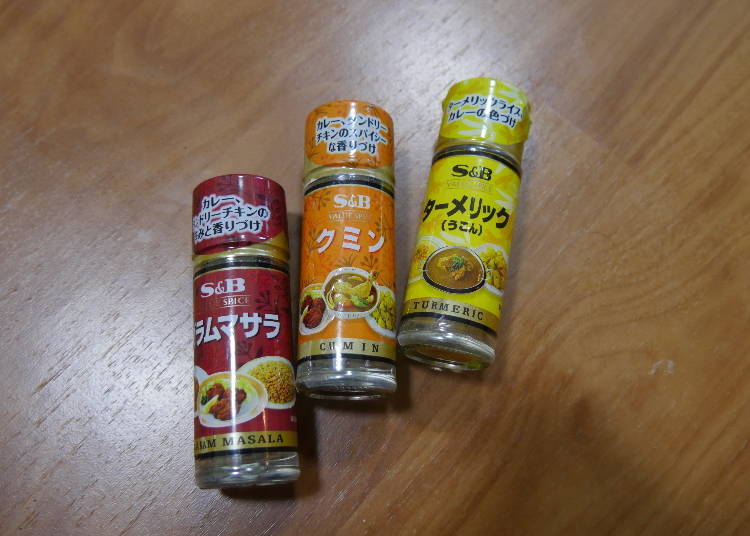
We decided to make “Chicken Curry.” You only need three spices from the 100 yen shop – garam masala, cumin, and turmeric! Really?! It’s difficult to mix all the authentic spices yourself, but the garam masala label lists ingredients cumin, coriander, cloves, black pepper, cardamom, and cinnamon as ingredients. Garam Masala great way to keep things simple.
●100 yen shop spices:
・Cumin
・Garam Masala
・Turmeric
・Chilli (optional)

Other ingredients:
●Ingredients
・Chicken 400g
・2 garlic cloves
・1/2 ginger root
・2 tomatoes
・3 purple onions
・Unsweetened plain yogurt (about 100g-200g)
●Seasonings
・Oil 100ml
・Salt
Start making curry!

First, cut the chicken into larger-than-bite-sized chunks, place it in a colander, and wash it twice. It’s important to wash away blood, etc. and to remove the odor.
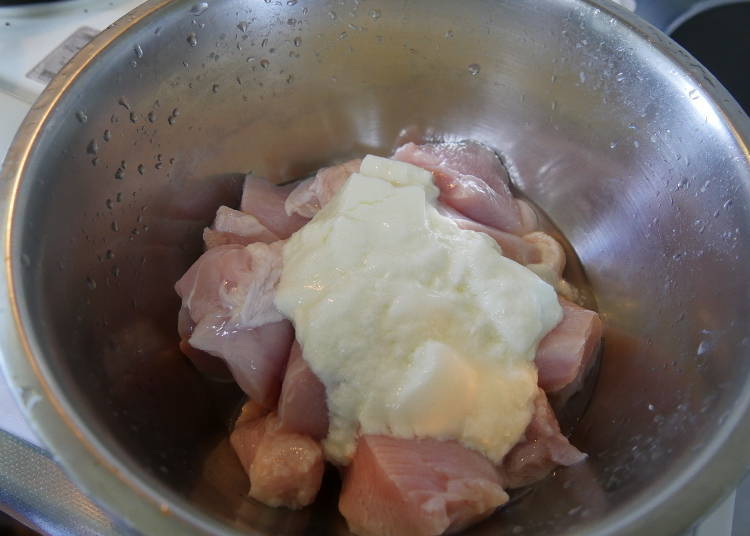
Next, mix about 3 tablespoons of yogurt with the chicken, and leave marinate. This is how the meat really becomes delicious. Now add about 5 shakes of turmeric (and about 7 chopped peppers, if you like) and mix. Place the mixture in the refrigerator for 10-15 minutes to cool.
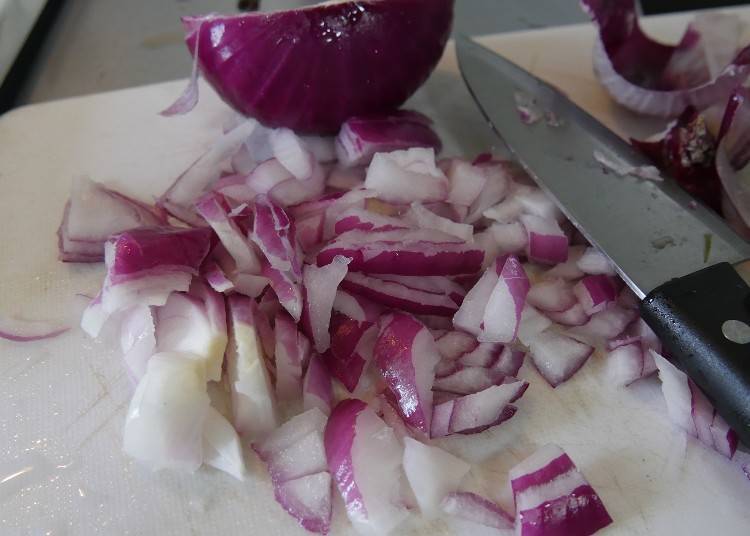
Next, chop the 2 onions. This time we cut them into larger pieces, but it seems better if they’re finely cut, so if you have a food processor or mixer, that’s perfect. Ideally the onion should be a fine paste. By the way, if you cool the onions before cutting them, your eyes won’t tear up as much!
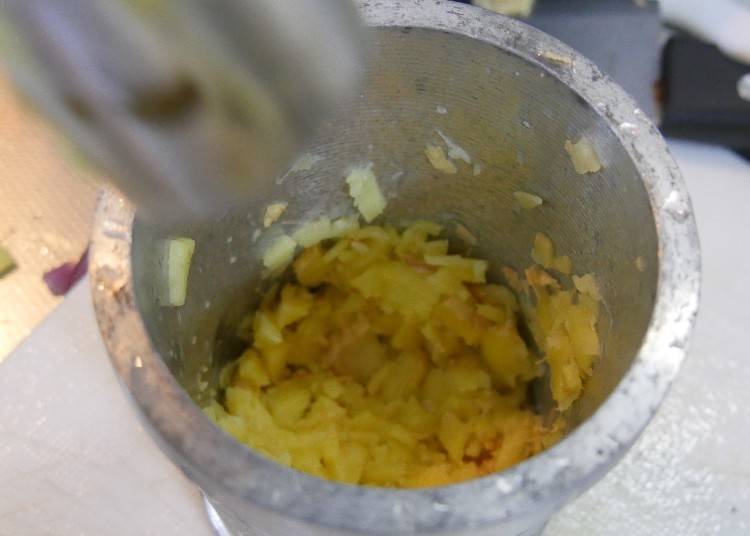
Next, make a paste of garlic and ginger. Mince 1 clove of garlic and half a ginger root, and crush them into a paste. Save other garlic clove, with the skin peeled.
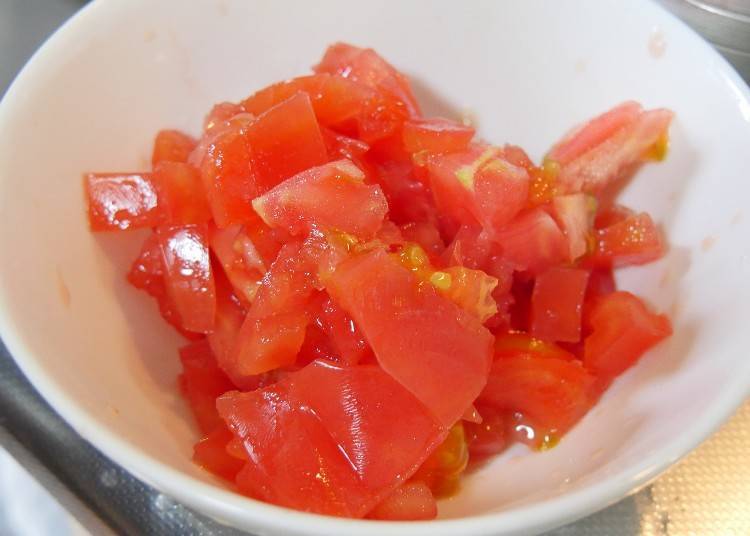
Finally, finely chop the tomatoes.
This completes the preparation. I wonder, “Is this all right?!”
The key to Indian curry is the onion! Stir well with a lot of oil
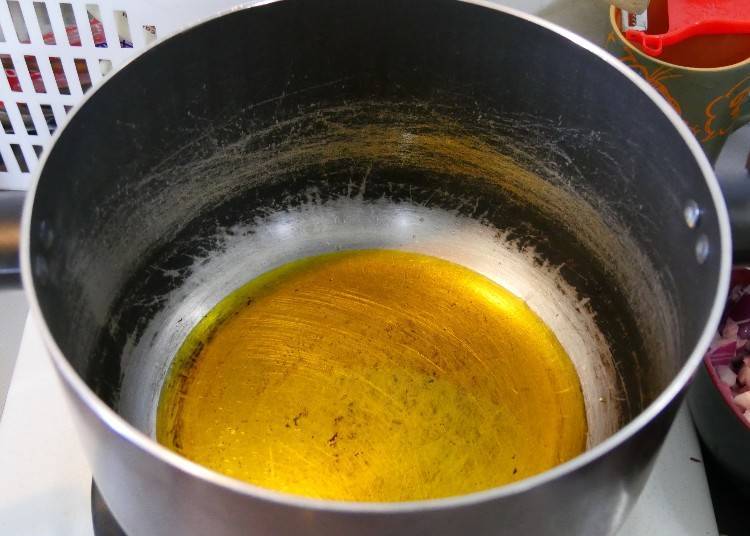
Put about 5 tablespoons of salad oil in a large pot. The richness of the oil is also an important feature of Indian curry. In India, mustard oil (oil squeezed from mustard seeds) used, so if you add it instead of salad oil, the difference will be noticeable.
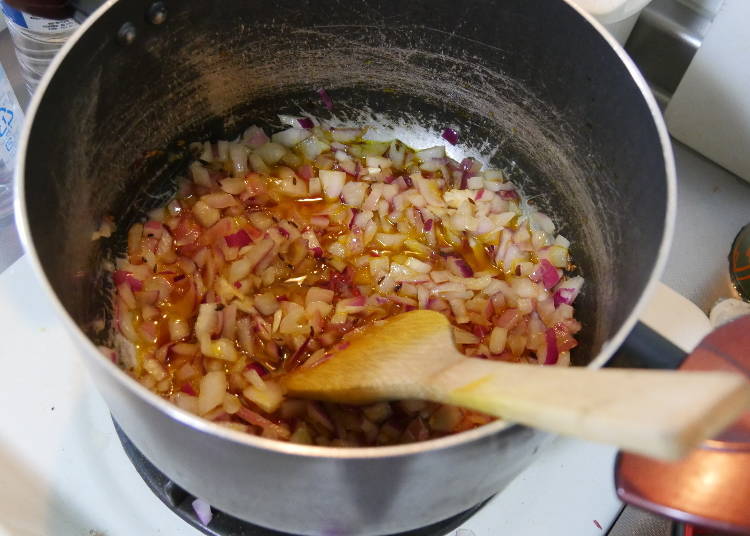
When the oil has warmed up a little, reduce the heat and add the onion. Cover the pan to boil the onions. Once they’ve boiled a little, simmer on low heat until they turn amber. Using purple onions here is an important factor in the taste of Indian curry.
Anant says that the major difference between Japanese curry and Indian curry is onion. In India, purple ones are standard, while yellow and white onions like those used in Japanese curry are rarely used. Generally, purple onions are said to be milder in flavor and smell, and are often found in Japanese salads.
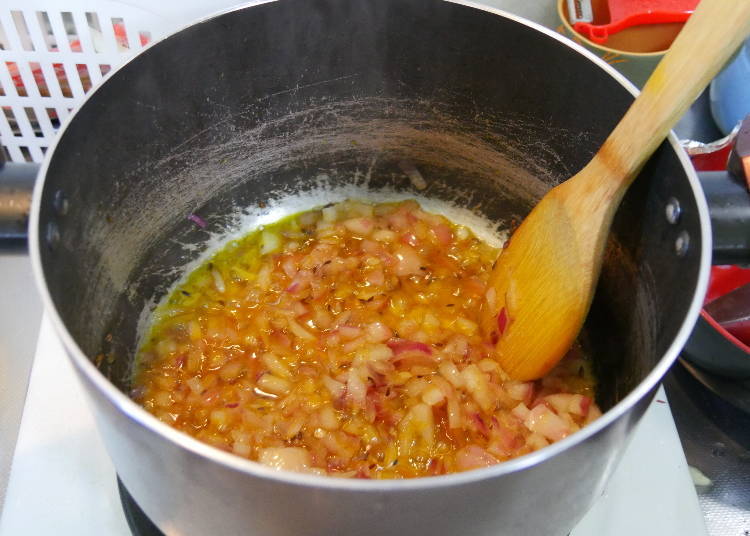
When the onions are ready, mix in the garlic and ginger paste. If the heat is too high, the mixture will burn, so as a rule, use low heat.
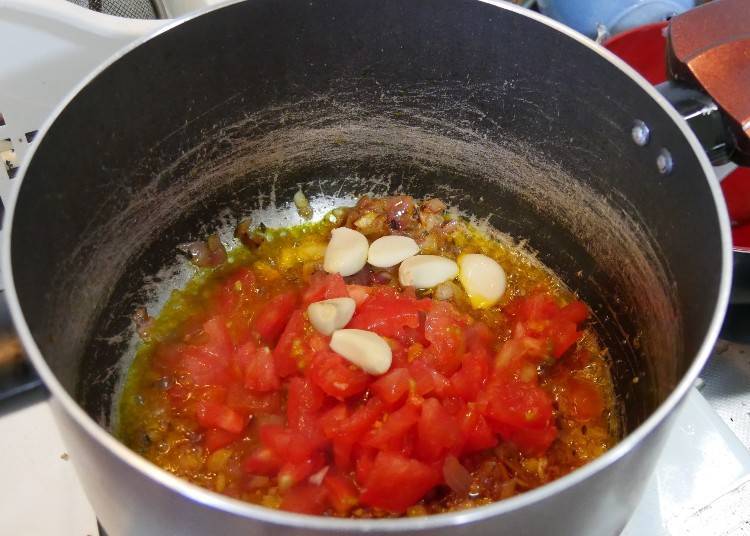
When it is well mixed, add the tomatoes and the remaining to the pan and fry.
The 100 yen spice is finally here!
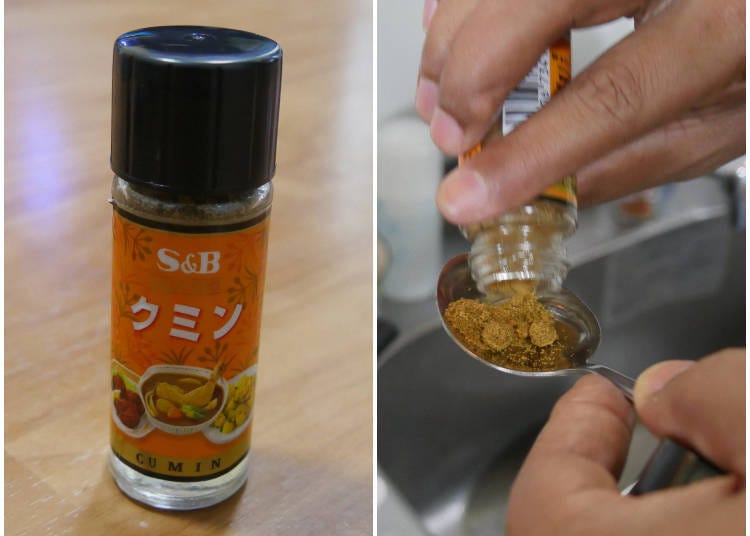
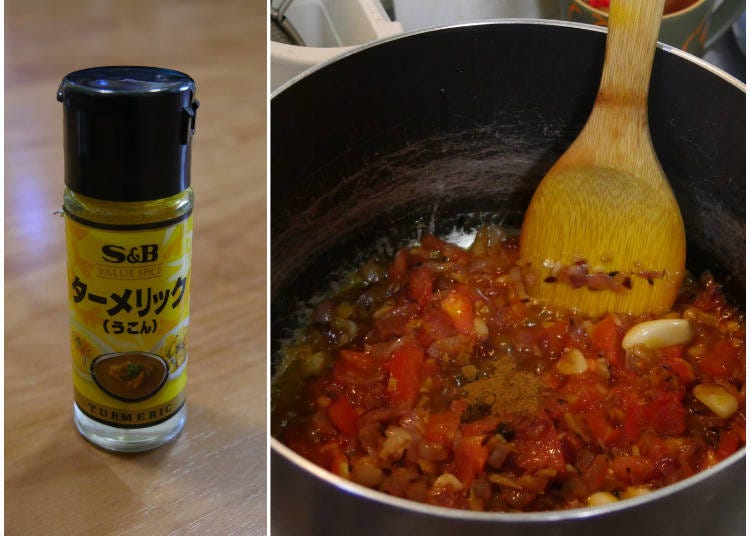
And finally, it’s time for the spice! First, add about half a tablespoon of cumin and about 3 shakes of turmeric. It seems that the taste is greatly affected by the amount of turmeric. “If you add too much turmeric, the taste will change and it will not be delicious, so take care of the amount!” said Anant.
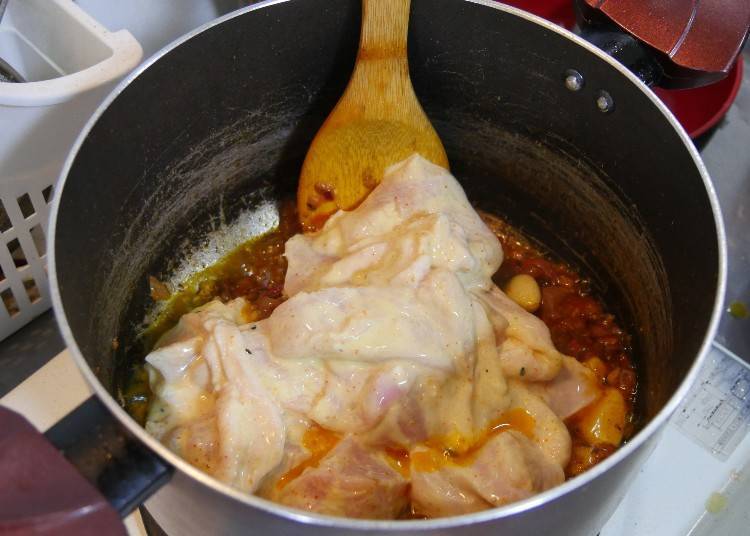
Now, put the chilled chicken in the pan. Be careful to leave out any excess yoghurt.
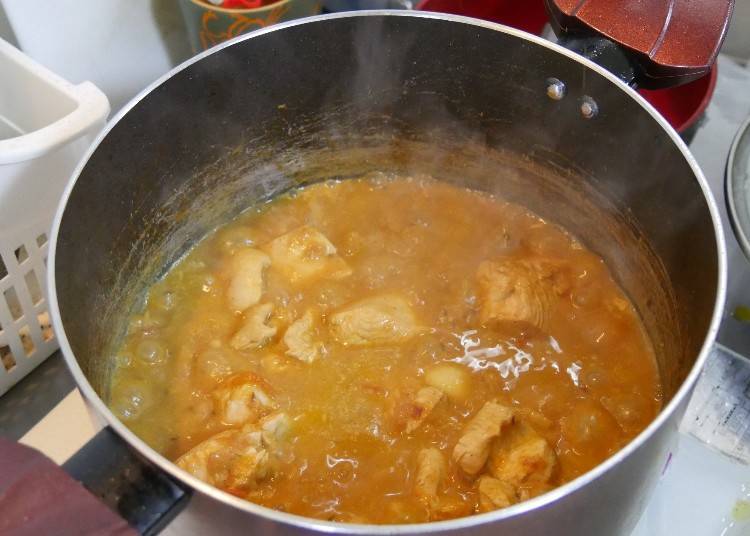
Add about 300ml of hot water and stir.
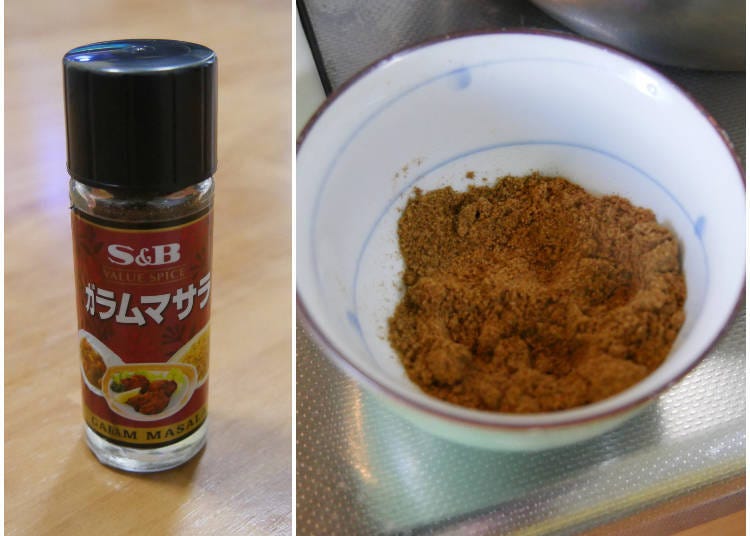
Add about a half a bottle of garam masala or more, as you like. I added a little more than half this time, but if you prefer a spicer taste you can add the whole bottle.
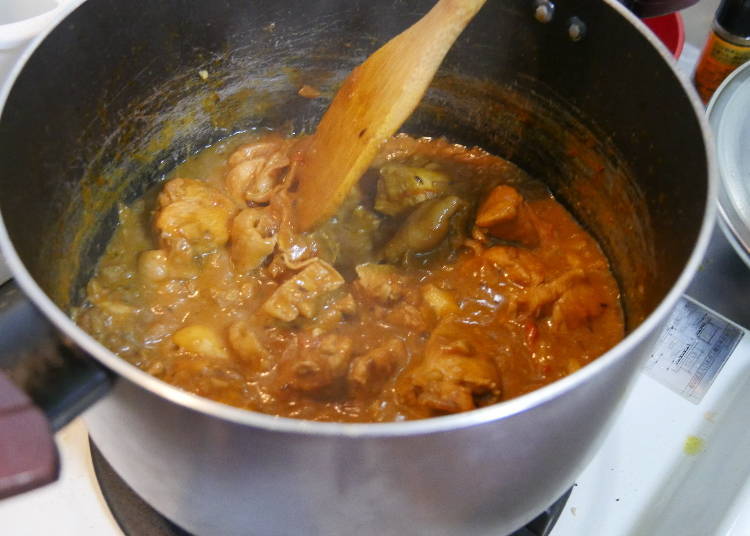
Another important point when making curry is to avoid letting it burn. Choose a pot that doesn’t burn easily, and mix the curry on low heat, checking it often. While stirring, let the curry boil for about 10 minutes.
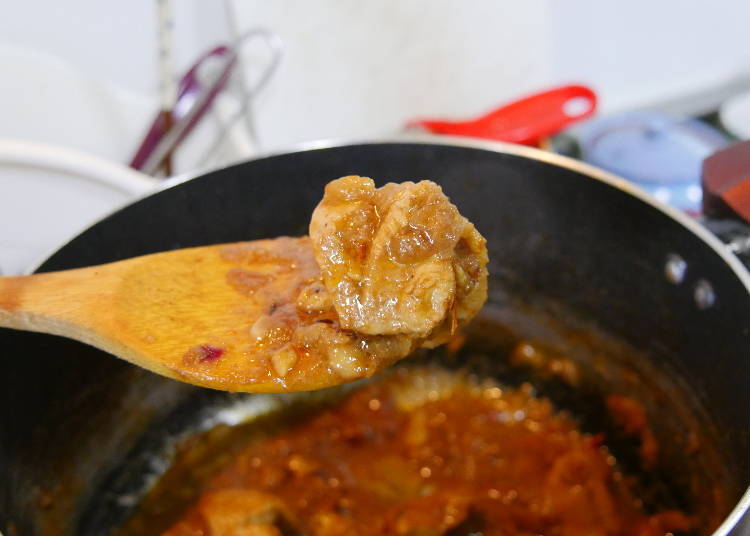
Once it has been boiled, add about 1 tablespoon of salt to finish. That’s it?! It’s surprisingly little. When you make your curry, you can add more, as you like.
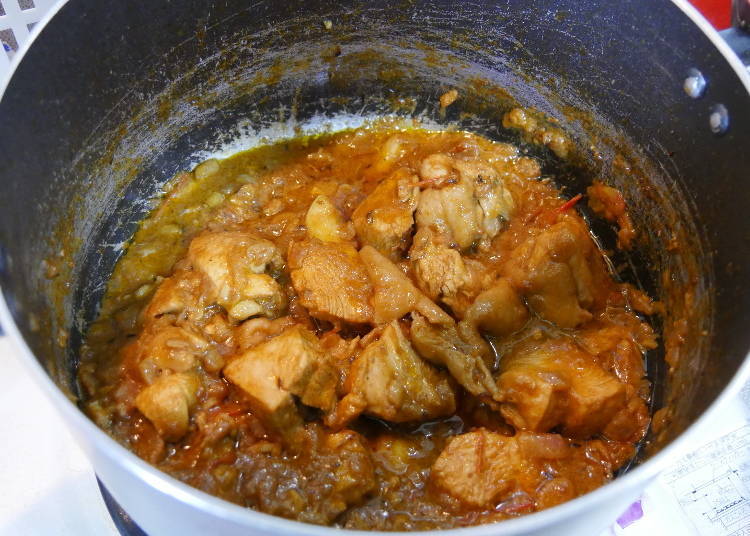
Then Anant said, “It's done!” The procedure is somewhat simple and the cooking time isn’t so long, but the fragrance is definitely that of Indian curry. However, I still don't know if a real Indian curry was made.
By the way, in India, clarified butter called “ghee” is used to finish the curry. It has been used in India since ancient times and is made by removing all impurities from unsalted butter. Due to its many high-quality nutrients, not only is ghee used for cooking but also in traditional Indian medicine, Ayurveda. Adding ghee, brings out the deep curry flavors. You can't buy it at a 100-yen shop, but if you are interested, please try it. If you add ghee, stop the fire first, cover it, and wait for a while.
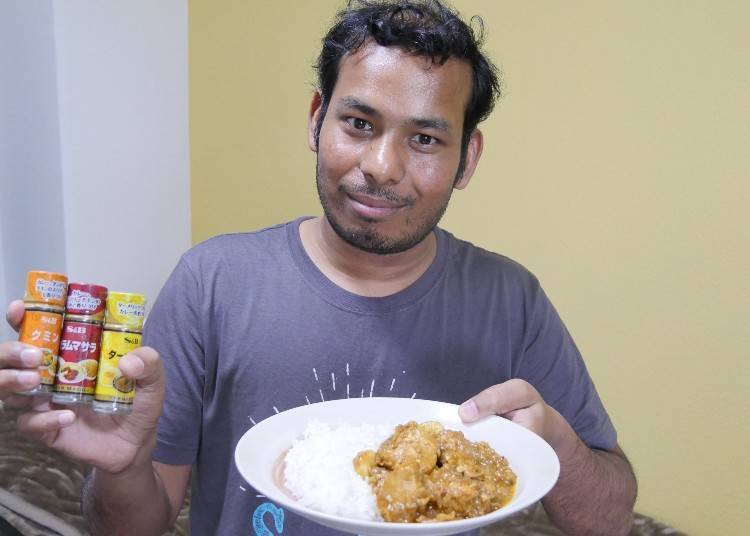
“I tried Japanese-style Indian curry! I made the taste weaker and used a little less salt, so if you want to make it spicier, try adding a lot of pepper.”
The Indian Chicken Curry using 100 yen spices is complete! How does it taste?!
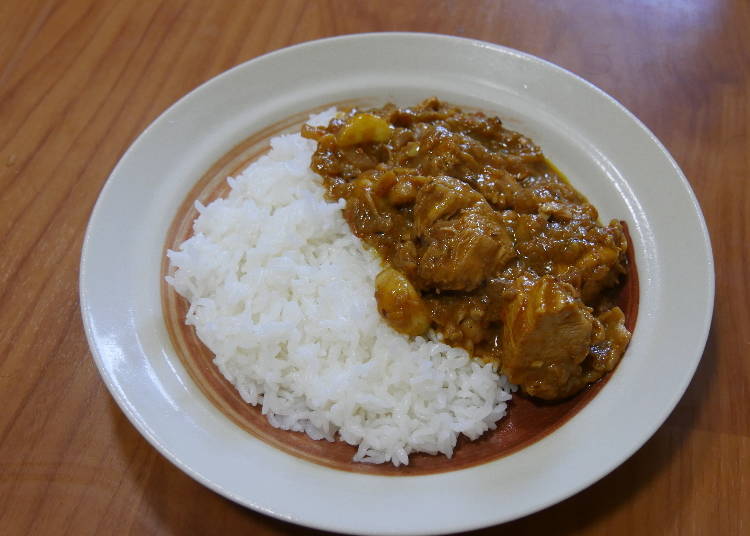
It’s finally a meal! It smells like Indian curry, but how does it taste?
“Delicious!” To be honest, I was surprised. Even though I came up with the idea to use 100 yen spices, I didn’t think it would be possible without more expensive spices and a lot of effort. My expectations have been exceeded – thank you, Anant!
“This is like curry that you’ll find in an Indian home. It may be a little different from an Indian restaurant, but it's delicious! You can't eat this in a restaurant! (lol)”

This is such a flavorful curry, you can hardly imagine it uses only these spices. Our editorial department even wondered, “Is the biggest difference between Japanese and Indian curry really using a different type of onions, frying them well, and a tomato base?”
If you can make authentic curry with such a small amount of spice, you’ll want to try it. This time, we used a curry recipe based on what Anant's cooks at home, but it’s also recommended to expand upon the original recipe, like changing the amount of spices.
You can make real Indian curry with 100 yen spices!
The result of this challenge was a great success, and we can truly say, “You can make delicious authentic Indian curry with spices from a 100-yen shop!” Try it sometime!
Written by: Miyuki Yajima. English translation by: Gabriel Wilkinson
Like cooking? Check out these related articles!
*Prices and options mentioned are subject to change.
*Unless stated otherwise, all prices include tax.
Popular Tours & Activitiess
Recommended places for you
-

Jukuseiniku-to Namamottsuarera Nikubaru Italian Nikutaria Sannomiya
Izakaya
Kobe, Sannomiya, Kitano
-

ISHIDAYA Hanare
Yakiniku
Kobe, Sannomiya, Kitano
-

Kanzenkoshitsuyakinikutabehodai Gyugyu Paradise Sannomiya
Yakiniku
Kobe, Sannomiya, Kitano
-
Appealing

Rukku and Uohei
Izakaya
Sapporo / Chitose
-

Kambei Sannomiyahonten
Yakiniku
Kobe, Sannomiya, Kitano
-
Goods

Yoshida Gennojo-Roho Kyoto Buddhist Altars
Gift Shops
Nijo Castle, Kyoto Imperial Palace
-

[Extended Offer!](12% OFF KKday Coupon) Mt. Fuji Autumn Leaves, Powder Snow & More! 15 Best Tours to Experience Japan in Fall & Winter
-

How to Get Don Quijote's Exclusive 2025-2026 Winter Gift (+Tax-Free Savings)
-

Tokyo City Pass Upgrade: Harry Potter Studio Tour & Top Sights up to 85% Off
by: Guest Contributor
-
Ad

Preserving the Beauty of World Heritage Site Shirakawa-go for the Future Through Responsible Travel
-

Simply Oishii Wagashi School Discover Japanese Culture Through Wagashi: A Hands-On Experience!
by: Guest Contributor
-

Keisei × Keikyu 16-Temple Goshuin Tour: Discover Deeper Tokyo & Yokohama
by: Guest Contributor
-

Noboribetsu Onsen: 5 Best Things to Do in Japan's Famous Hot Springs Town!
-

Spending time in the modern city. Let's take a look around Roppongi!
-

Dining in Arashiyama: 18 Must-Try Restaurants for Scenic Kyoto Cuisine
by: Wong Man Yee
-

Complete Guide to Buying Japanese Medicine in Japan: Phrases and Vocabulary You Need to Know
-

Where You Should Stay in Hakodate: Best Areas & 16 Top Hotels For Visitors
-

(Video) Walking Tour along Narita Omotesando - Quaint Historical Village near Narita Airport!
by: Victor Gonzalez
- #best sushi japan
- #what to do in odaiba
- #what to bring to japan
- #new years in tokyo
- #best ramen japan
- #what to buy in ameyoko
- #japanese nail trends
- #things to do japan
- #onsen tattoo friendly tokyo
- #daiso
- #best coffee japan
- #best japanese soft drinks
- #best yakiniku japan
- #japanese fashion culture
- #japanese convenience store snacks












